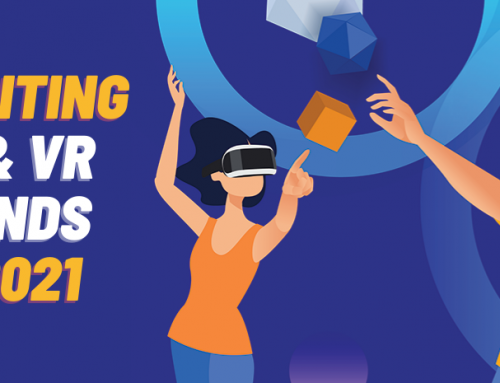
IT professionals who work with both Augmented and Virtual Reality can provide us with the industry insights after taking the realistic view on both technologies. Due to the availability of smart phones it seems that AR will prevail much easier and it will be possible to use it in various industries. Personally I find it appealing how the creator of Magic Leap Rony Abovitz showcases the major differences between VR and AR.
“Our philosophy as a company (and my personal view) is to ‘leave no footprints’ in the brain. The brain is very neuroplastic and there is no doubt that near-eye stereoscopic 3D systems have the potential to cause neurologic change.”
Rony’s best observations can be viewed in the section Ask Me Anything on Reddit and below we outline 3 industry and end-user scenarios where AR is much better solution than VR.
1. AR AMPLIFIES MUCH BETTER THAT PEOPLE ARE SOCIAL CREATURES
There are several pre-requisites for Augmented and Virtual Reality to be used more often: hardware needs to be affordable and accessible; the technology should work all the time; and there should be social component to using it.
Because of these three reasons, AR is already much more wide-spread, which also indicates that humans who are using AR want to add a layer of content to their reality rather than to replace it with VR and to completely shut themselves off.
With AR learning and interaction becomes more collaborative due to the very nature of interface where people look at the markers and the additional content in person. In VR, specialized social networks are so far the only way for users to connect while each of them wears their own headset and has their own VR view to the world.
2. AR APPS MAY BE EASIER TO DEVELOP AND SPREAD TO THE USERS
In VR there are so called 6 DOF (6 degrees of freedom) as users’ activity and gaze are tracked along the x, y and z axis. These 6 degrees practically mean that you may physically move yourself: left, right, forward, backward, up and down and you will get transported to a different world of immersive experiences.
On the other hand, in Augmented Reality, the quality of graphics, higher resolution displays and other metrics can be more rudimentary and basic since you are not viewing content directly, in front of your eyes and in the immersive manner. With Augmented Reality, technical requirements for you to make an app may be less demanding and certainly developers do not have to worry about consumers’ and players’ motion sickness.
Since hardware for both technologies still needs to improve in UX, it will be possible to impress users with AR and VR in foreseeable future.
3. WHEN UPFRONT COSTS FOR TECHNOLOGY ARE EXPENSIVE, AR TRUMPS VR
As it is the case with most of the digital transformation projects, AR and VR as enterprise solutions are not easy to implement. The buy-in from different stakeholders is needed, the technical rigor is a prerequisite, the timeline for project implementation and the budget should be precisely followed.
Therefore, when screens need to be provided for thousands of users and employees such as in projects for Industries 4.0 it is much more logical to use AR and web-based VR on the existing smart phones and the computers of employees than to buy thousands of VR headsets whose price ranges from dozen dollars to several thousands (depending on the company brand).
ARVRtech is providing solutions in both AR and VR space, depending on customer specific needs, and aiming to provide the maximum value and experience to the end users.


